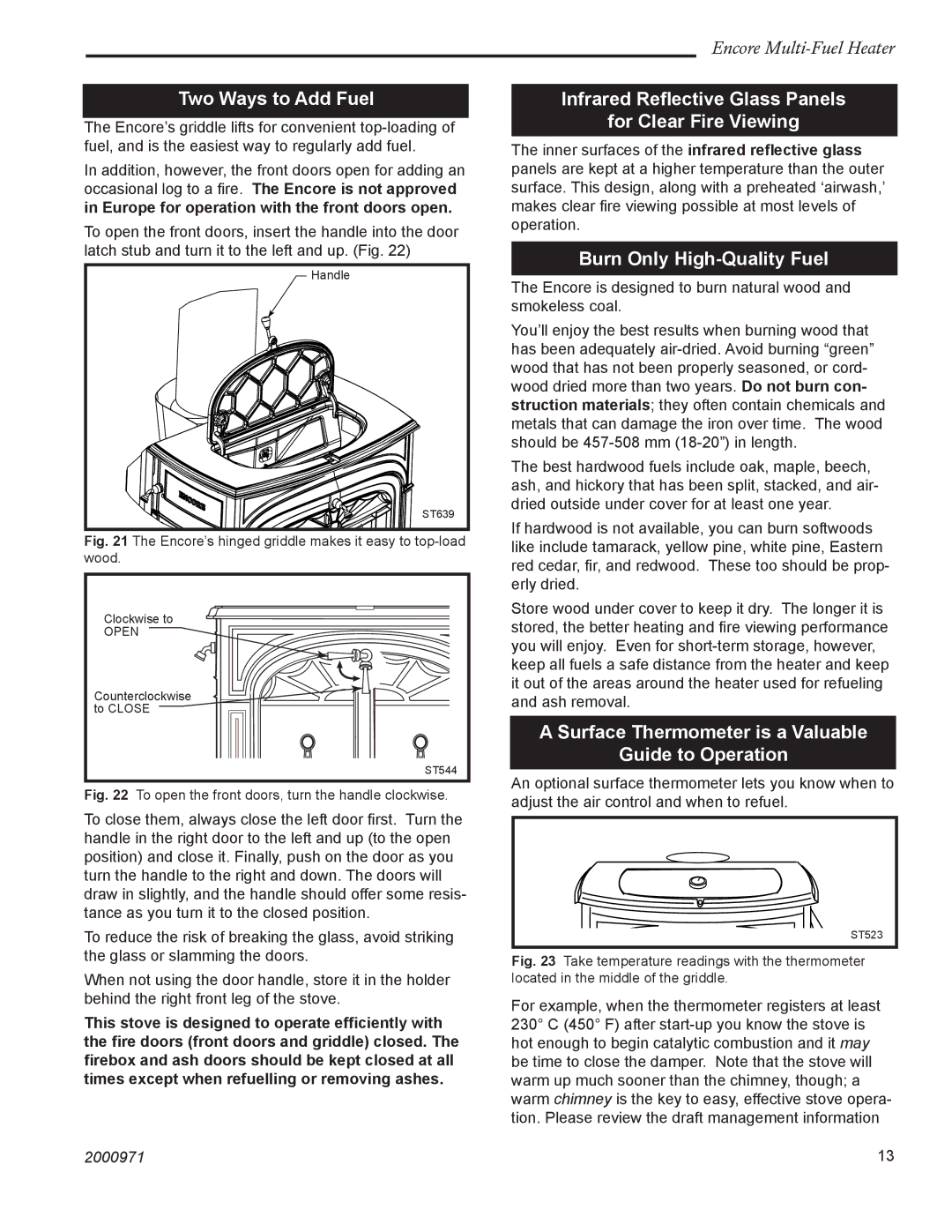2547CE specifications
The Vermont Casting 2547CE is a premier choice for homeowners seeking a powerful and efficient wood stove that seamlessly combines traditional craftsmanship with modern technology. Renowned for its exceptional heating capabilities and aesthetically pleasing design, this model sets a benchmark in the industry.At the heart of the 2547CE is its efficient combustion system, which utilizes secondary combustion technology. This innovative feature ensures that the wood is burned completely and cleanly, maximizing heat output while minimizing emissions. Homeowners can enjoy a warm and inviting space without the guilt of contributing excessive smoke to the environment. This is particularly important in today’s eco-conscious society, where sustainable heating options are in high demand.
One of the standout characteristics of the Vermont Casting 2547CE is its impressive heating capacity. It is capable of heating spaces of up to 2,000 square feet, making it ideal for larger homes or open-concept living areas. The stove also boasts a long burn time, allowing for extended periods between reloads, which means less maintenance and more time enjoying the warmth.
The stove’s design is both functional and visually appealing. With its cast iron construction, the 2547CE provides durability and a timeless aesthetic that can complement various interior styles. The intricate detailing and classic finish options, including a variety of colors, allow homeowners to personalize their stove to fit their décor.
In terms of usability, the Vermont Casting 2547CE is equipped with user-friendly features. The front-loading door provides easy access for loading wood and cleaning the stove, while the large glass window allows for a mesmerizing view of the flames. This feature not only enhances the ambiance of any room but also provides a visual indicator of the stove’s performance, helping users to monitor the fire.
Safety is also a priority with the 2547CE, which includes a built-in air wash system that keeps the glass clean for optimal visibility. Additionally, it meets or exceeds EPA requirements, ensuring that it operates efficiently and responsibly.
In summary, the Vermont Casting 2547CE stands out for its combination of efficiency, aesthetics, and durability. Its advanced combustion technology, substantial heating capacity, and elegant design make it a top choice for homeowners looking to enhance their living space with a reliable and beautiful wood stove.

